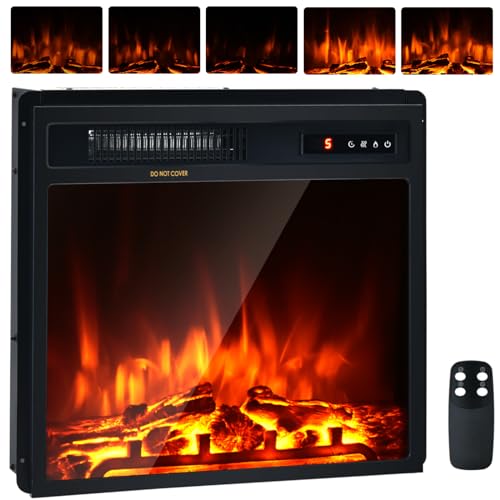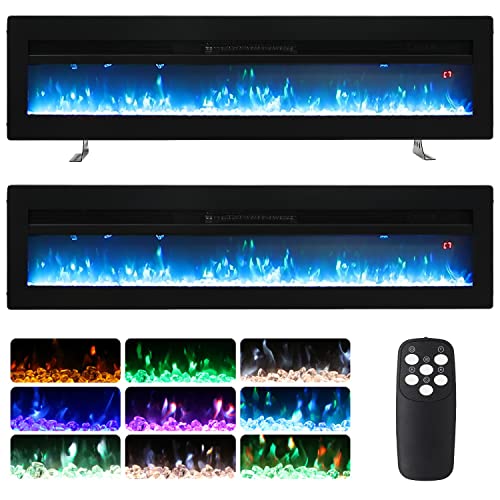Nine Things That Your Parent Taught You About Wood Heater Stove
페이지 정보
작성자Crystle 댓글댓글 0건 조회조회 5회 작성일 24-12-30 03:02본문
 Proper Use and Maintenance of a Wood Heater Stove
Proper Use and Maintenance of a Wood Heater StoveA wood stove provides an ideal place to warm up and also provide warmth to a whole house. However, certain appliances emit harmful gases like creosote, which could be harmful to the health of your family and property.
It is crucial to take care of these stoves. The most important things to keep in mind are: not overheating the space, not messing around with the fire, and using properly-dried firewood.
Fuel
Wood stoves can be used to burn a variety of fuels, including dry wood, as well as manufactured solid fuels like briquettes or fire logs. These cleaner burning alternatives are healthier and better for the environment than traditional household coal or wet wood. However, they do still emit gasses and smoke, and require regular maintenance to keep them operating at their Best wood burning stoves.
Read the instructions of the manufacturer prior to purchasing or using any kind of fuel. Be sure that it's the correct fuel for your stove. Unsuitable fuels could damage your stove or chimney, leading to expensive repairs and invalidating your warranty. Utilizing a fuel that has not been approved may be illegal, especially in smoke control areas. Look for the "Ready to Burn" logo. This means that the fuel is within the sulphur limits and smoke emission limits and can be legally sold for domestic use. The logo is often displayed along with the price and brand details or on the packaging.
The fuels that are suitable for use are prepared (stored and then split for a few months before use) or kiln-dried to decrease the amount of moisture which improves the amount of heat produced and improves the efficiency of combustion. The kind of small wood burner you choose will also depend on your heating requirements. Softwoods like pine and spruce offer an excellent value for money but hardwoods like oak and beech generate more hot embers, and they do so over a longer period of time. Fruitwoods such as cherry and apple not only provide efficient heating but also improve the ambience of your home by their pleasant scents.
If you own an appliance that is multi-fuel, you should consider a mixed fuel fire. combining Wood burner clearance sale with smokeless briquettes can help maintain the flames and warm your home for a longer time. Briquettes can be used as a backup and also help prevent a chimney fire by keeping the air moving.
A stove that is well-maintained will produce more heat and burn less fuel while also releasing less harmful particles. If you have a gas or oil-fired wood stove, make sure it is installed by a registered installer (on a competent person scheme like HETAS, APHC, BESCA, Certsure or NAPIT). Regularly serviced appliances are more efficient and help protect your health and the environment by preventing harmful emissions.
Design
Wood stoves are a fantastic source of heat, however their design is crucial to consider. Unwanted byproducts of combustion, like smoke and carbon monoxide, are a concern for environmental and health impacts. The most important factor in reducing the emission of these gases is to ensure proper operation and careful design.
Modern wood stoves are much more environmentally sustainable than older models. All stoves certified by the EPA meet strict emission and energy efficiency regulations which maximize the amount of heat they generate. You can verify if a wood stove is certified by looking for the metal EPA label on the back or checking the EPA database. Going to local hearth stores who know the performance capabilities of their selection is a great way to learn more about wood burning stoves uk stoves and which size and capacity is the best fit for your home.
Controlling the flow of air through the stove is a crucial part of EPA emission regulations. The stove's firebox is surrounded by walls of fireproof material and air vents are positioned in the walls to ensure controlled airflow. The control of airflow is essential to ensure that the combustion process is optimal and emissions are minimized.
Modern stoves often have a baffle to increase the time for combustion of the fire, which lowers smoke output and harmful gases. Some wood stoves use a catalyst converter to reduce NOx emissions. This type of system is a little more expensive and is usually only used in high-end wood stoves.
Stoves employ different types of air control systems to regulate air flow. The majority of wood stoves utilize a passive air supply which requires the owner (you) to operate the stove correctly to ensure maximum performance. Certain wood stoves have active air supply systems that are controlled by sensors. These sensors monitor the combustion process, and adjust the air supply as necessary.
One of the greatest benefits of wood stoves is that it does not require electricity to operate, making it an ideal alternative heating option for homes that are located in remote areas or aren't connected to an electric grid. But, if you do not have a backup heat source to rely on during an outage or in case of snow storms, a wood stove is not the sole option for heating your home.
The output of heat
A lot of wood stoves advertise their maximum heat output in BTUs. This is a false statement however, as the actual heating capacity of a wood stove is dependent on a variety of factors such as the size of the room as well as the degree of insulation.
The climate of the region can also influence the heating demands. Colder regions require stoves with a higher BTU rating to ensure comfort.
Other variables that affect the production of heat include the type of large wood burning stove used as well as the frequency of refilling. Dry, seasoned firewood creates more heat than freshly cut and wet logs. A stove fan can help circulate the heat produced by the wood burner within the room rather than have the hot air rise.
It is vital to keep in mind that the maximum output of a wood heater stove should not be a constant event because continuous high-fire can cause damage to the stove's internals and may cause carbon monoxide to leak into the home.
Regular refueling can also enhance the performance of the fireplace. Make sure the log isn't too big and placed on the glowing embers to ensure that it doesn't contact the glass or walls of the stove. Add smaller logs more frequently instead of waiting too long between additions.
High efficiency stoves are engineered to achieve a higher level of heat output with the same amount of fuel, by providing pre-heated combustion air and other design features. These stoves typically produce less smoke, toxins, and carbon monoxide than earlier models.
Some people opt to install the boiler stove as part of their heating system. The heat generated by a wood-burning stove is used to heat water for central heating systems or hot water tank. This lets the heat be distributed throughout the home. This is a reliable and cost-effective way to heat homes. However the installation process can take a long time. This method requires an additional flue and the energy needed to run a boiler will increase overall costs.
Safety
Fireplaces and wood stoves are an attractive and convenient method of heating homes. However, they aren't free of dangers. Sparks and embers can fly out of a fire and ignite furniture or carpeting A burning chimney that is hot can cause fire damage to the structure of your house. Proper use and maintenance of a wood-burning stove minimizes the dangers.
To keep wood-burning stoves safe and in good working order they must be regularly checked and maintained. This includes inspecting the flue and chimney at least twice a year for signs of rust or wear and cleaning them. The chimney should be checked for creosote half-way through the season. This is highly explosive and can lead to an explosion in the chimney.
When purchasing a wood-burning stove be sure to choose one that has been certified by Underwriters Laboratories (UL) or another lab that is recognized as a testing lab. This will ensure that the stove is built to comply with federal safety standards and is designed for proper venting. Check the hinges, legs and grates to ensure they are in good shape and securely fastened to a stove's floor.
If you opt to install a wood-burning stove in your cabin, make sure the floor underneath it is a sturdy and constructed from non-combustible material. You can also lay a non-combustible tile over your existing flooring when it is combustible.
Burn only hardwoods that are seasoned and dry. Dry and damp wood creates excessive smoke and creosote, which is a flammable byproduct, which can build up in your chimney and release toxic chemicals into your home. Do not burn cardboard or paper, trash or any other combustibles, as these can cause dangerous fumes, and could not even ignite.
 Never "over-fire" your wood stove, i.e. create a larger fire than the stove is capable of handling. Over-fired stoves can lead to flames escaping from the combustion chamber, causing damage to the stove, chimney connector and chimney itself, as well as burning other combustible materials in your home. It is also important to ensure that the fire is completely extinguished before leaving your home or going to bed. Also, you must have functioning carbon monoxide and smoke alarms in your house.
Never "over-fire" your wood stove, i.e. create a larger fire than the stove is capable of handling. Over-fired stoves can lead to flames escaping from the combustion chamber, causing damage to the stove, chimney connector and chimney itself, as well as burning other combustible materials in your home. It is also important to ensure that the fire is completely extinguished before leaving your home or going to bed. Also, you must have functioning carbon monoxide and smoke alarms in your house.댓글목록
등록된 댓글이 없습니다.

